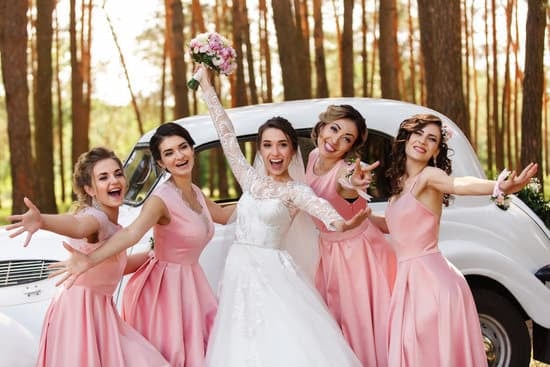
A traditional wedding ceremony is a sacred and joyous event that holds deep cultural significance for many people around the world. From intricate customs to symbolic rituals, traditional weddings are steeped in tradition, heritage, and meaning. In this article, we will delve into the rich tapestry of traditional wedding ceremonies, exploring their history, cultural practices, ceremonial traditions, and more.
Traditional wedding ceremonies have been a cornerstone of societies for centuries, serving as a celebration of love and commitment while honoring cultural values and customs. Understanding the origins and evolution of these ceremonies provides insight into the deep-rooted traditions that have shaped different cultures. By examining the history of traditional wedding ceremonies, we gain a deeper appreciation for their enduring importance in society.
Throughout this exploration, we will shed light on unique customs and practices that are synonymous with traditional wedding ceremonies in various cultures. From the intricate attire worn by the bride and groom to the special music and dance performances, we will unveil the diverse array of traditions that make each traditional wedding ceremony a distinctive and memorable experience.
History of Traditional Wedding Ceremonies
The history of traditional wedding ceremonies is a fascinating topic that spans across cultures and time periods. The origins of these ceremonies can be traced back to ancient civilizations, where marriage was not only a personal union but also a social and economic contract between families. In many cultures, traditional wedding ceremonies were often accompanied by specific rituals and customs that symbolized the joining of two individuals and their families.
One of the earliest recorded examples of formal wedding ceremonies dates back to ancient Egypt, where marriages were considered sacred and essential for perpetuating the line of pharaohs. The concept of exchanging rings as a symbol of commitment also originated in ancient Egypt. In India, traditional Hindu wedding ceremonies have been passed down through generations, with roots in Vedic traditions that are thousands of years old.
As different cultures interacted through trade and exploration, the exchange of wedding customs and traditions became commonplace. This led to the evolution and diversification of traditional wedding ceremonies around the world. For example, the white wedding dress commonly worn by brides in Western cultures can be traced back to Queen Victoria’s choice of attire for her own marriage ceremony in 1840. This decision popularized the tradition in Europe and eventually influenced bridal attire globally.
The history of traditional wedding ceremonies is a testament to the rich tapestry of human culture and tradition. As societies continue to evolve, it is important to recognize and celebrate the enduring significance of these timeless rituals that bring people together in love and unity.
| Traditional Wedding | Cultural Influence |
|---|---|
| Ancient Egypt | Sacred union and family contract |
| India | Hindu traditions dating back thousands of years |
| Queen Victoria’s influence | Global impact on bridal attire tradition |
Cultural Practices
Traditional wedding ceremonies are often steeped in cultural practices and rituals that have been passed down through generations. These customs vary widely from one culture to another, but they all play a significant role in the celebration of love and commitment. One common practice is the exchange of symbolic gifts between the bride and groom or their families.
For example, in Indian weddings, the groom’s family presents the bride with jewelry or clothing as a symbol of welcome and acceptance into the family. In some African cultures, the bride’s family may present the groom with livestock as a gesture of goodwill. These customs serve to solidify the bond between both families and are often accompanied by blessings and prayers for the couple’s future.
Another unique custom commonly practiced in traditional wedding ceremonies is the use of specific foods and drinks with symbolic significance. For instance, in Chinese weddings, it is customary to serve a dish known as “longevity noodles,” which symbolizes a wish for a long and happy marriage.
In many Latin American cultures, a special cake called “el arroz con coco” is prepared to represent unity and abundance in the couple’s life together. These culinary traditions not only add flavor to the festivities but also carry deep cultural meanings that honor the union of marriage.
Rituals involving fire or lighting are also prevalent in traditional wedding ceremonies around the world. In Hindu weddings, for example, couples participate in a ritual called “saptapadi,” where they take seven steps around a ceremonial fire while making seven promises to each other.
Similarly, in some Native American wedding ceremonies, couples participate in a “fire blessing” ritual that involves lighting a sacred fire as an expression of purification and unity. These rituals symbolize strength, passion, and commitment as couples embark on their new journey together.
| Unique Customs | Cultural Significance |
|---|---|
| Exchange of symbolic gifts | Solidifies bond between families |
| Symbolic foods and drinks | Represent unity and abundance |
| Rituals involving fire or lighting | Symbolize strength, passion, and commitment |
Traditional Attire
Traditional wedding ceremonies are often accompanied by the use of exquisite traditional attire that holds significant cultural and symbolic meaning. The clothing and accessories worn by the bride, groom, and wedding party vary greatly across different cultures, reflecting unique traditions and customs. Here are some examples of traditional attire from different cultural backgrounds:
– **Indian Wedding Saree**: In India, the bride typically adorns a beautiful saree or lehenga in vibrant colors, intricate embroidery, and dazzling embellishments. The groom wears a traditional sherwani or kurta with coordinating elements to complement the bride’s outfit.
– **Chinese Wedding Qipao**: Chinese brides often wear a qipao, a form-fitting dress with exquisite details such as phoenix embroidery or dragon motifs. The groom may wear a changshan or a western-style suit depending on the couple’s preference.
– **African Wedding Kente Cloth**: In African weddings, couples may choose to wear garments made from kente cloth, a colorful woven fabric that is native to Ghana. These garments are rich in symbolism and represent the cultural heritage of the individuals wearing them.
Aside from bridal ensembles, traditional wedding attire involves various accessories that hold special significance. For instance:
– **Hawaiian Lei**: In Hawaiian weddings, both the bride and groom exchange leis as symbols of love, respect, and honor.
– **Veils and Tiaras**: In Western wedding traditions, brides often wear veils as a symbol of purity or modesty while tiaras represent their role as royalty on their special day.
The diverse range of traditional wedding attire reflects the richness of each culture’s heritage and adds an element of beauty and authenticity to these joyous occasions. As contemporary trends influence fashion choices worldwide, traditional wedding attire continues to evolve while retaining its timeless elegance and cultural importance.
Traditional Wedding Decor
In many traditional wedding ceremonies, symbolic decorations such as flowers, colors, and sacred objects are used to represent specific meanings. For example:
- Flowers: In many cultures, flowers hold symbolic meaning. For instance, in Hindu weddings, marigolds are considered auspicious and symbolize a joyous beginning. In Western weddings, white roses symbolize purity and new beginnings.
- Colors: Different cultures associate specific colors with certain qualities or blessings. For example, in Chinese culture, red is associated with good luck and happiness.
- Sacred Objects: In some traditional weddings, sacred objects like candles or religious symbols are incorporated into the decor to honor spiritual beliefs.
The arrangement of these elements within the wedding space often follows specific cultural traditions. From the placement of ceremonial altars to the design of decorative centerpieces, every detail reflects age-old customs and beliefs that have been passed down through generations.
Overall, traditional wedding decor serves as a tangible representation of a couple’s shared cultural heritage while also adding beauty and grandeur to their special day. It showcases the depth of tradition and values that lay at the heart of traditional wedding ceremonies across different cultures.
Ceremonial Traditions
Within traditional wedding ceremonies, there are specific ceremonial phases and key moments that are fundamental to the celebration of love and union. These phases vary across different cultures but often share similar symbolic significance and emotional resonance. From the exchange of vows to the ceremonial blessings, these traditions reflect the values, beliefs, and customs of the communities from which they originate.
Exchange of Vows
One of the most iconic moments in a traditional wedding ceremony is the exchange of vows between the bride and groom. This solemn pledge to love, honor, and cherish one another symbolizes the commitment and devotion that forms the foundation of their marriage. In many cultures, this exchange is accompanied by religious or spiritual rituals that hold deep cultural significance.
Ceremonial Blessings
Ceremonial blessings often play a central role in traditional wedding ceremonies. These blessings may be bestowed upon the couple by religious leaders, elders within the community, or other respected individuals. The act of receiving blessings signifies a collective affirmation and support for the newlyweds as they embark on their journey together.
Rituals Symbolizing Unity
Different cultures incorporate unique rituals to symbolize unity between the bride and groom during a traditional wedding ceremony. This may involve rituals such as handfasting in Celtic traditions or sharing a drink from a common cup in Jewish ceremonies. These rituals serve as powerful metaphors for the merging of two lives into one harmonious partnership.
From East to West, traditional wedding ceremonies are rich with meaningful ceremonial traditions that honor love, commitment, and cultural heritage. These timeless practices continue to resonate with couples and communities around the world as they celebrate this momentous occasion.
Music and Dance
Significance of Music and Dance
In many traditional wedding ceremonies, music and dance are not just forms of entertainment, but also serve as symbols of joy, unity, and cultural identity. The rhythm, melody, and lyrics of traditional wedding songs often convey messages of love, commitment, and blessings for the newlywed couple. Similarly, traditional wedding dances are an expression of the community’s support and happiness for the couple’s union.
Specific Songs and Movements
Different cultures have their own set of traditional songs and dances that are performed during weddings. From lively folk dances to soulful love ballads, each song and movement carries unique significance. For example, in some African cultures, the “first dance” at a wedding represents the couple’s first public act as husband and wife; while in Indian weddings, specific ceremonial songs accompany rituals such as the exchange of garlands or the ceremonial walk around the sacred fire.
Preservation of Cultural Heritage
Through music and dance at traditional wedding ceremonies, cultural heritage is preserved and passed down through generations. These art forms serve as a way to showcase each culture’s unique identity, history, values, beliefs, and traditions. As such, they hold great significance in keeping communities connected to their roots even as they evolve with modern influences.
Modern Adaptations
In conclusion, traditional wedding ceremonies hold a significant place in various cultures around the world, as they symbolize the union of two individuals and their families. As discussed throughout this article, these ceremonies have a rich history and are filled with unique customs and rituals that have been passed down through generations. From the traditional attire to the music and dance, every aspect of a traditional wedding ceremony holds deep cultural significance.
Despite the strong ties to tradition, we also see how traditional wedding ceremonies have evolved and adapted to modern trends and preferences. In today’s society, couples often blend traditional elements with contemporary touches to create a wedding that is both meaningful and personal. This blending of old and new allows for a celebration that honors cultural roots while also reflecting the couple’s individuality.
Ultimately, traditional wedding ceremonies continue to thrive in our modern world, as they provide a bridge between the past and the present. They serve as a beautiful reminder of cultural heritage and timeless love, while also embracing the ever-changing landscape of weddings in today’s society. Whether it’s incorporating modern technology or adding personalized details, traditional wedding ceremonies will undoubtedly remain an enduring part of our diverse global culture.
Frequently Asked Questions
What Is the Traditional Order of a Wedding Ceremony?
The traditional order of a wedding ceremony typically includes the processional, opening words or welcome from the officiant, readings or musical interludes, vows, exchange of rings, pronouncement of marriage, and the recessional. Of course, there can be variations in this order depending on cultural or religious customs.
What Are the Words to a Traditional Wedding Ceremony?
The words to a traditional wedding ceremony often include an opening welcome from the officiant, followed by readings or poems chosen by the couple or their families. Then there are typically vows exchanged between the bride and groom, often using the traditional “to have and to hold” wording.
This is followed by the exchange of rings with accompanying words by the officiant. Finally, there is usually a pronouncement of marriage and a closing blessing.
What Is the Traditional Wedding Ceremony Verbage?
The traditional wedding ceremony verbiage often includes words that express love, commitment, and unity between the couple. These may include passages from religious texts such as the Bible or Quran, as well as secular readings about love and partnership.
The key elements are declarations of intent (vows), exchange of symbols (rings), an official proclamation (pronouncement), and blessings for a harmonious future together. The specific wording can vary widely depending on cultural, religious, or personal preferences.




